Barcelona is a city I’ve grown quite fond of. It’s a place I called home for nearly two years! Located along the Mediterranean Sea, Barcelona is the capital of Catalunya and is a modern metropolis whose rich past is proudly on display throughout the best places to visit in Barcelona. This city is packed with culture and class, design and elegance.
About 5 million people live in bustling Barcelona, which has consistently been one of the world’s leading economic cities. World-class art, gastronomy, fashion, sports and education are just a few of the many treasures that Barcelona boasts. There is something for everyone and plenty to keep the whole family entertained. Here is my list of the 20 best places to visit in Barcelona (in alphabetical order).
Also check out our article: Top 10 Best Restaurants in Barcelona
Several million tourists come through the city each year and this will come at no surprise the minute you land at Barcelona’s international airport- it was given a beautiful makeover in time for the 1992 Olympic games and features hundreds of feet of sleek marble throughout its four enormous terminals.
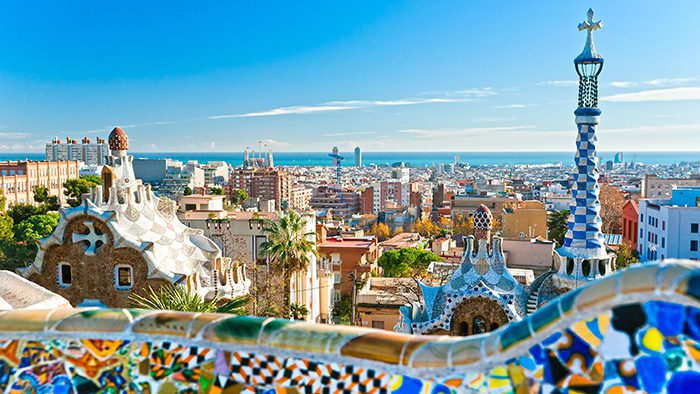
Catalan is the main language of Spain’s Catalunya region. Most people in Barcelona speak Catalan among themselves, but the more common Castellano Spanish is also spoken and understood quite well. Catalan is a Romance language that shares various features with other languages such as Spanish, Portuguese, and French. There are also notable differences in the written form of Catalan.

Getting around Barcelona is uncomplicated and straightforward, with reliable subway, street tram, and bus systems in addition to plentiful taxis, you can get everywhere effortlessly. Barcelona is the ideal walking city, and with plenty of charming streets, esplanades, and historical sights you will want to put on those walking shoes and begin to discover all the city’s charms. The Gothic Quarters, in particular, are a great place to roam on foot and for photographers alike.
Tip: A great way to score free public transport, free entry, skip-the-line entry, sightseeing bus tours and additional discounts is by getting a Barcelona Turbopass. It’s honestly the best way to see all of the best places to visit in Barcelona. The pass ships worldwide or is available for pick up at El Prat Airport or in Plaza Catalunya. The Barcelona Turbopass also includes a free harbor cruise, as well as free or discounted admission to several sights included in this guide: Casa Milà, Casa Batlló, CosmoCaixa Science Museum, and many more.
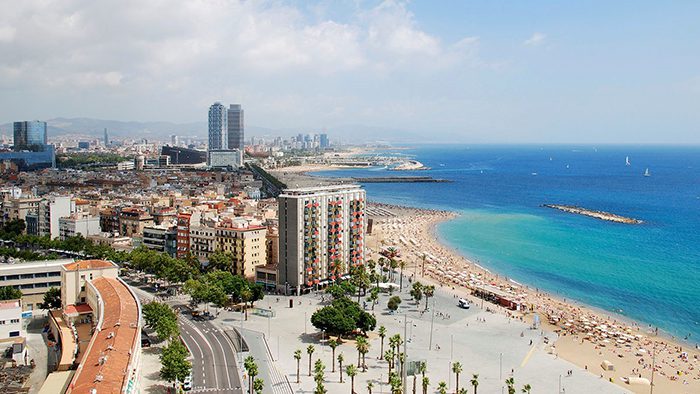
The great artist, sculptor, and architect Antoni Gaudí has truly left his mark on architecture, but has really impacted the cultural heritage of this majestic city. With magnificent works inspired by the shapes and lines of nature on display throughout Barcelona, Gaudí’s influence can be seen and felt. He is practically celebrated as an honorary national hero. Barcelona is exciting and cosmopolitan, and packed with entertainment that will tantalize you every step of the way.
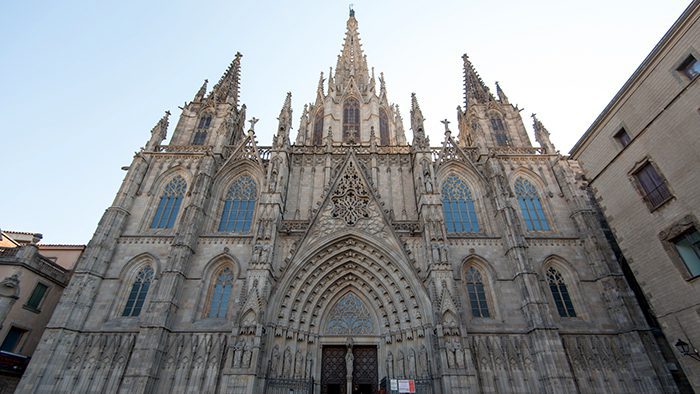
The seat of Barcelona’s archbishop, the Cathedral of the Holy Cross and Saint Eulalia, is a staggering gothic-style church that was built at the former site of a Visigoth church. It is located in the Barri Gòtic district and is undeniably one of the best places to visit in Barcelona. Construction of the Barcelona Cathedral lasted more than 200 hundred years beginning in the 13th century. The roof features a menagerie of statues, ranging from mundane farm animals to fantastical creatures straight out of local legends.

The Barcelona Cathedral is dedicated to one of the patron saints of Barcelona, Santa Eulalia. The Catholic Church considers her a martyr because according to legend, Roman officials stripped the young girl in the public square but a sudden sprinkle of springtime snow hid her from the public. The infuriated officials stuffed the girl in a barrel full of knives and threw her down a street. Her body is now resting in the cathedral’s tombs. Because it is believed that Santa Eulalia was 13 at the time of her death, 13 geese are kept in a separate section of the church.
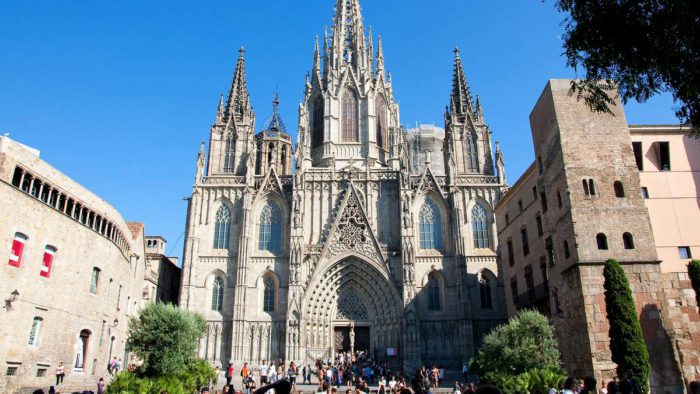
One section of the chapel contains a holy cross that was recovered from a ship that participated in the 1571 Battle of Lepanto against the invading Ottoman army. During the battle, legend has it that the corpus moved by itself to avoid a cannon ball. This was interpreted as a holy sign of granted victory against the Ottomans and the miracle was dubbed the Christ of Lepanto.
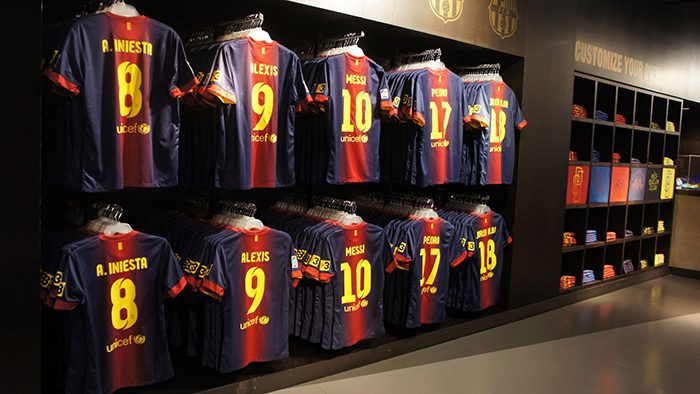
For a fútbol or American soccer fan, the Barcelona FC Museum is easily one of the best places to visit in Barcelona. The museum is split into three sections and every room is filled with trophies, statues, photographs, memorabilia and lots of nostalgia from Barcelona’s beloved team. The fútbol art collection showcases historical collectibles, such as the boots worn by Ronald Koeman when he won Barcelona its first European Cup.
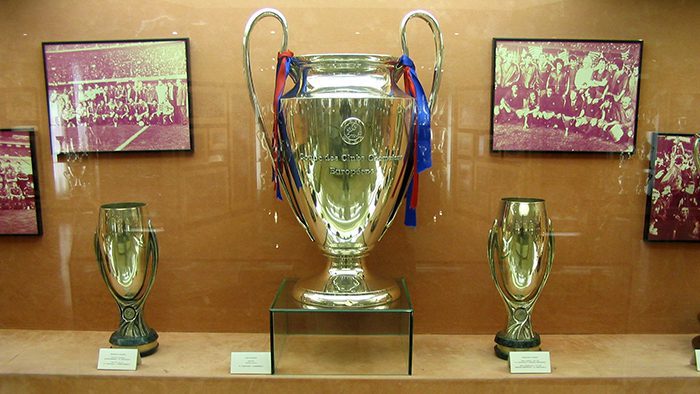
Plus, every trophy the club has ever won, either in its original or replica form, is kept here. Another section features an interactive wall that displays the club’s history through a series of photos and videos combined with music. The final section is an incongruous art collection that includes pieces by local artists. Visitors can purchase either a ticket to museum or a dual ticket that offers access to the museum and the back area of the club.
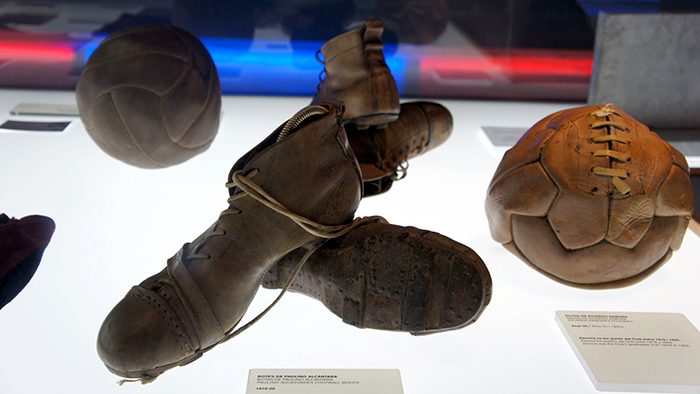
The Barcelona FC Museum is open 10 a.m. to 8 p.m. Mondays through Saturdays April 6 through October 4; the rest of the year, it is open from 10 a.m. to 6:30 p.m. daily and 10 a.m. to 2:30 p.m. Sundays and public holidays. Admission is €17.
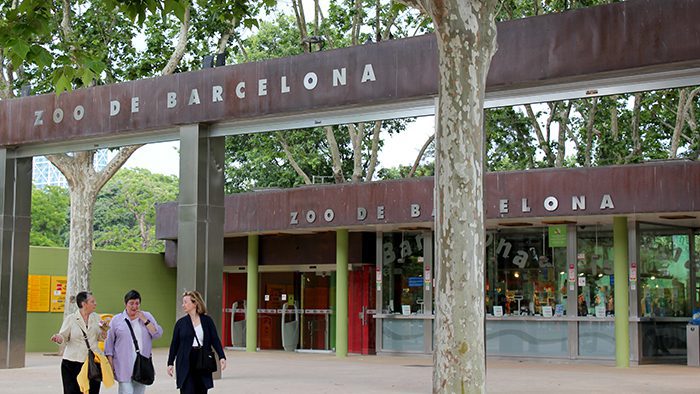
What’s your remedy when the kids get bored of Gaudí and gothic churches? A fun visit to the Barcelona Zoo! With more than a hundred furry, scaly, wet and feathery animals, this zoo is sure to be a hit. Finding it is fairly easy, as there are signs everywhere in Parc de la Ciutadella pointing tourists toward it.

As one might expect, the zoo has a menagerie of animals. Gaze in wonder at the Iberian lynx, get a glimpse of a rhinoceros iguana and hear a macaw talk, all in a few hours. There are two major tours: a two-hour ride past the major exhibits, or a five-hour trail that passes every exhibit in the park. You could stop by the restaurant for lunch, laze around in the picnic area and take a ride on some ponies or on an electric train.

Grab some souvenirs at the gift shop or stop by the aquarium and watch a dolphin show. Regardless of how you choose to spend your day, the Barcelona Zoo is among the best places to visit in Barcelona and is sure to provide tons of fun for the whole family. The Barcelona Zoo is open every day of the year at 10 a.m. Admission is €19 for adults and €11.40 for kids 3-12 years old.
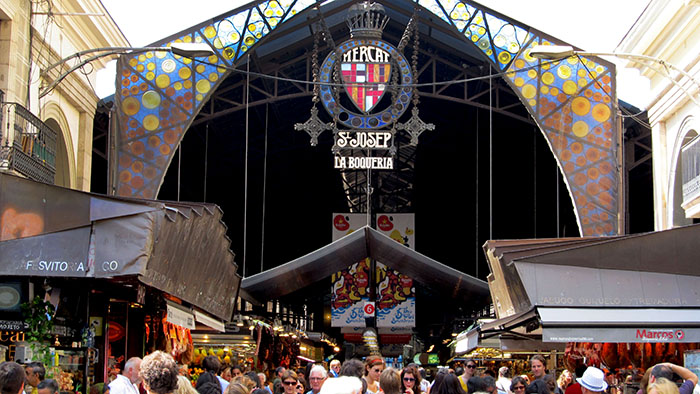
For the ultimate farmer’s market experience, visit La Boquería, a sprawling market located right off Las Ramblas. The market first sprung up in the 13th century and was regarded as an offshoot of another local market until the 1800s. In 1835, La Boquería received official recognition and was designated a new building. It now houses more than 45 different market stalls offering a wide variety of food, including baked goods, meats, desserts, cheeses, seafood, organic products, and vegetables.
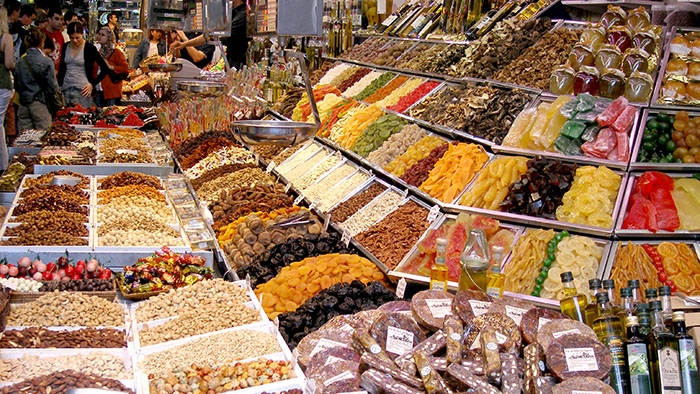
I like to stop in and order a cup of freshly squeezed fruit juice and toasted caramelized almonds. Also be sure to pick up some vacuum-sealed Iberian ham slices for your trip back home. The packaged ham travels well and makes for a great gift for any of your carnivorous friends. La Boquería is always bustling with shoppers and tourists, but the quality of the food in this famous market is never compromised by its fame. There is no doubt in my mind that it’s one of the best places to visit in Barcelona. There’s something there for everyone!
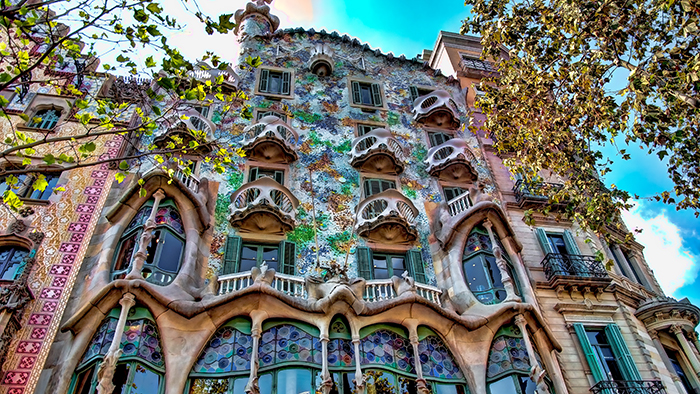
Casa Batlló is yet another intricately designed modernist building from the fertile mind of architect Antoni Gaudí, and is part of the UNESCO World Heritage Site that consists of his works. This visually complex building is filled with surprising details, vibrant colors and unique textures, making it a refreshing change from Barcelona’s gothic neighborhoods. Refurbished during the early 20th century with the help of fellow architect Josep Maria Jujol, the building is located on the Illa de la Discòrdia. The house was constructed in 1906 and was commissioned by the textile mogul Josep Batlló as a personal place of residence.
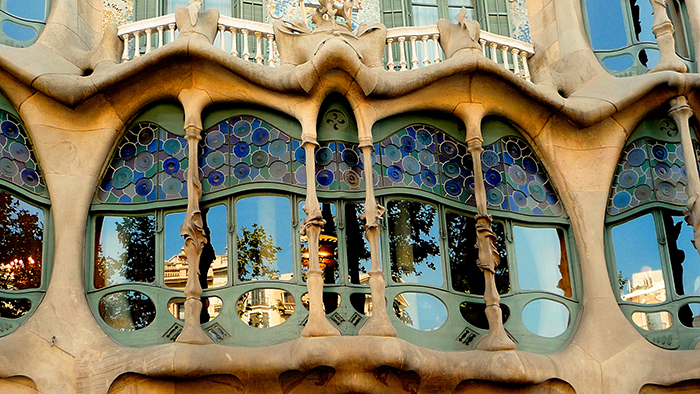
The building’s haunting elements have earned the museum the local nickname of Casa De Los Huesos, Spanish for the House of Bones. Visitors will notice a general lack of straight lines in the design. The arched roof is often compared to the back of a dragon and the shattered tiles slowly fade from bright oranges to richer blue and green shades. It’s a beautiful, one-of-a-kind building and one of the best places to visit in Barcelona. At Casa Batlló you will be transported to another world in typical Gaudí style.
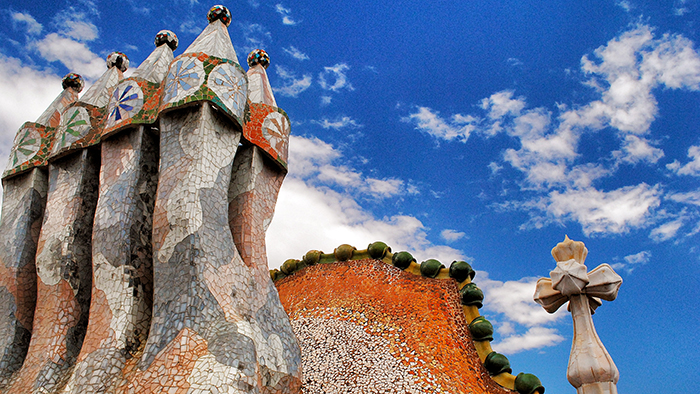
Audio tours are available. I suggest purchasing tickets directly from the museum’s website to avoid long lines. Casa Batlló is open 365 days a year from 9 a.m. to 8 p.m., but check the website for any special events taking place that may alter its regular business hours. Four different experience packages are available, which start at 25€ for adults; 22€ for students, juniors, and seniors; and 15€ for Catalonia residents. Children under 7 can experience each package for free.
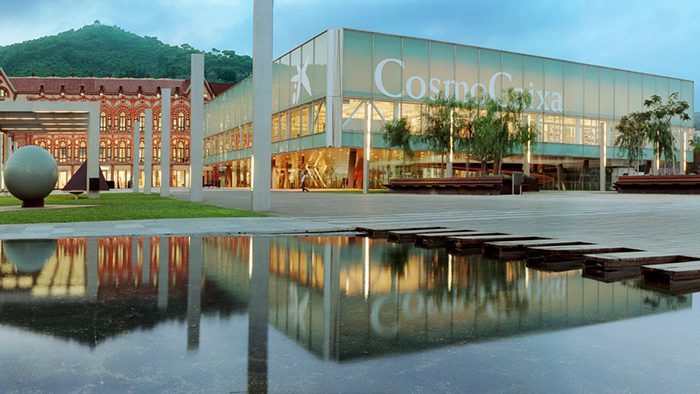
If you are looking for an enjoyable and interactive experience the whole family can enjoy, pay a visit to Cosmo Caixa Science Museum. This museum is an impressive ode to the sciences located in a converted factory. CosmoCaixa opened in 2005 and is an ultra-modern design feat containing some of Europe’s best scientific exhibitions and hands-on activities. The museum is also home to indigenous Amazonian plant and animal life, which includes poisonous snakes and a five-story high Acariguara tree. All of this together makes CosmoCaixa one of the best places to visit in Barcelona for people of all ages.
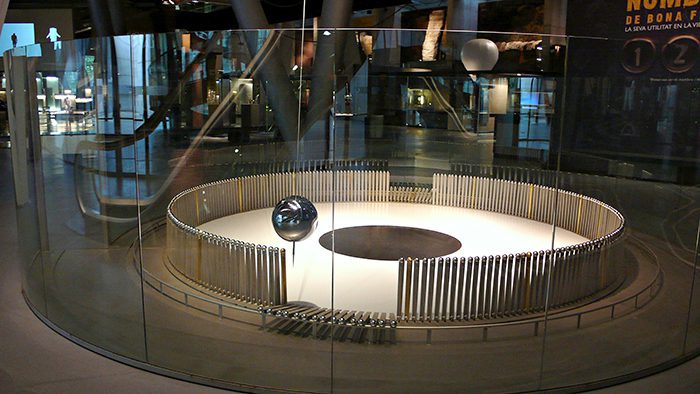
For once, geology is entertaining, physics is comprehensible and chemistry does not put you to sleep. For an extra €2 fee guests can enter the planetarium for an informative and truly out-of-this-world show. In two to three hours you can experience CosmoCaixa and finally see what your high school science teacher was so excited about. The museum is open Tuesday through Sunday.
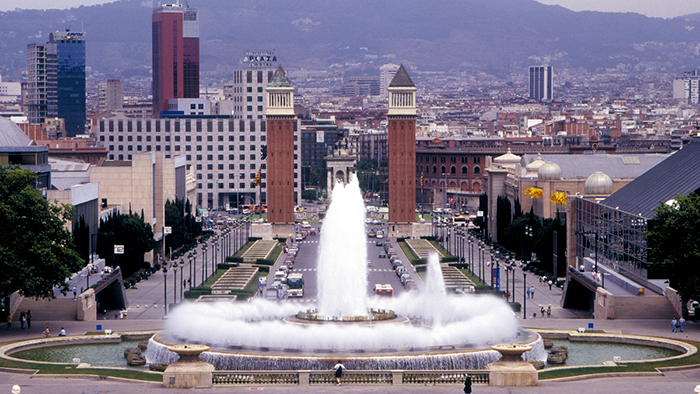
The Magic Fountain is a spectacular exhibition of water, music and light that is one of the legendary attractions in the Montjuïc neighborhood of Barcelona.
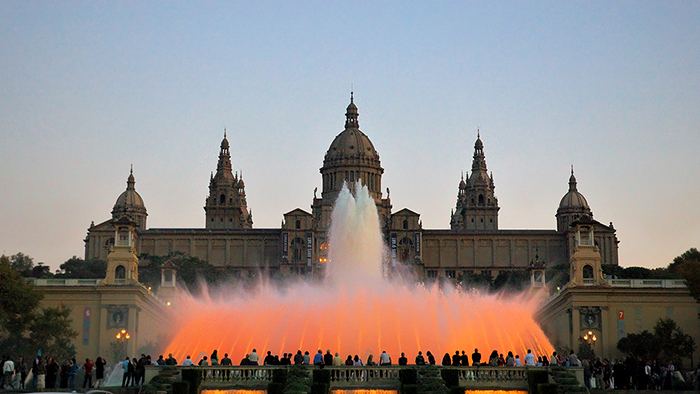
The fountain was constructed in 1929 for the Barcelona International Exposition. Despite fears it would not be completed in time, 3,000 workers managed to finish the fountain and the first show took place one day before the start of the exposition. The fountain was nearly destroyed in the Spanish Civil War and did not reopen until 1955. Music was eventually added to the show and has since featured scores from movies like Gladiator, The Godfather, and the Lord of the Rings films. The fountain is located on the former site of The Four Columns, which were demolished in 1928 by Prime Minister Miguel Primo de Rivera. They were recently rebuilt and now stand near the fountain.
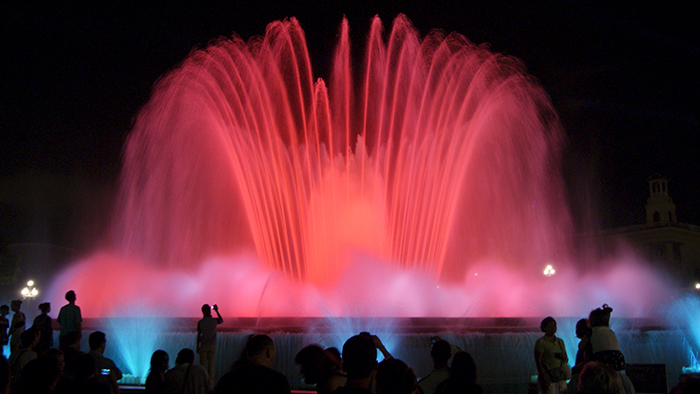
Show times vary depending on the month. From October to April, they take place every 30 minutes between 7 and 8:30 p.m. on Fridays and Saturday. From May to September, they take place every 30 minutes between 9 and 11 p.m. on Thursdays through Sundays. The fountain, especially when it’s beautifully lit at night, is definitely best places to visit in Barcelona. The nearest subway station is Espanya.

You can’t talk about the best places to visit in Barcelona without mentioning Barri Gòtic, or the gothic quarters of Barcelona. This striking area of Barcelona is full of narrow streets, tall dark shadows and open squares. Walking through this district is an emotional seesaw, from claustrophobic alleys to agoraphobic plazas. The area is dotted with famous buildings, including the Temple of Augustus and the Cathedral of Santa Eulalia. There is also a definitive juxtaposition between the old and the new.
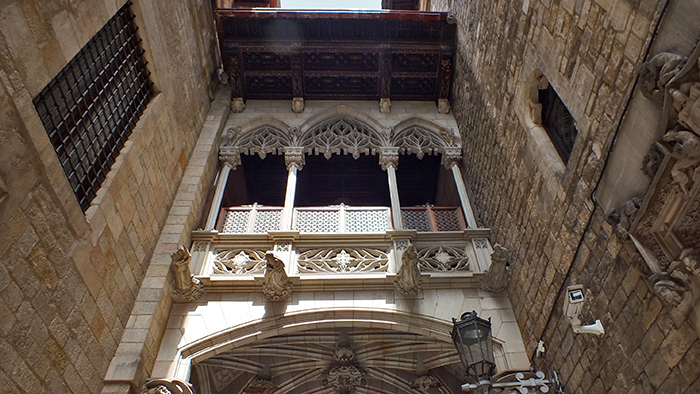
This is the original Barcelona — the one populated by the medieval residents of the city all those years ago and the one that has drawn tourists and photographers from across the world. It has been modernized greatly though and the old and new stand in glorious harmony. Next to a church is a grocery store. Adjacent to a temple is a cell phone tower. The boundaries of the area are well defined: from La Rambla to Via Laietana and from the Mediterranean coast to Ronda de Sant Pere.
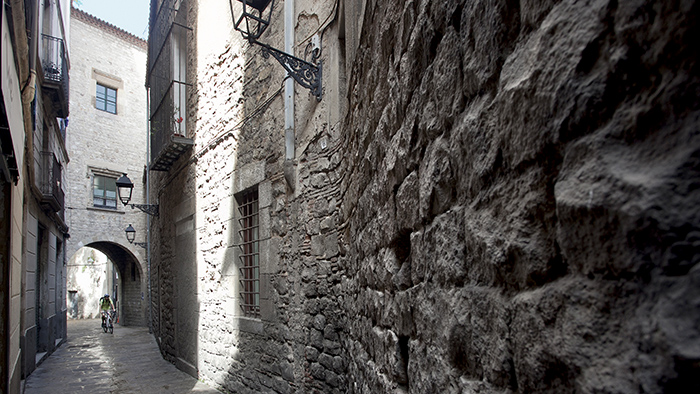
If you have a single hour in Barcelona, spend it wandering the magical streets of the Barri Gòtic district. The old-world charm and architectural details are well worth the visit, which can be completed in about two to three hours on foot. Most of the streets are pedestrian-only and I would only recommend wandering them during daylight hours because there is poor visibility at night.

Montjuïc (pronounced Mont-joo-eek,) literally translates into Hill of the Jews. It is a 568-foot high hill with a fortress at its summit. Wandering up and down the slopes is like wandering through history. The fortress was built in 1640 to repel Felipe IV’s attempted invasions. The first path to the summit opened in 1607. Since then, it has hosted the International Exposition in 1929, the Summer Olympics in 1992 and the Spanish Grand Prix four times.
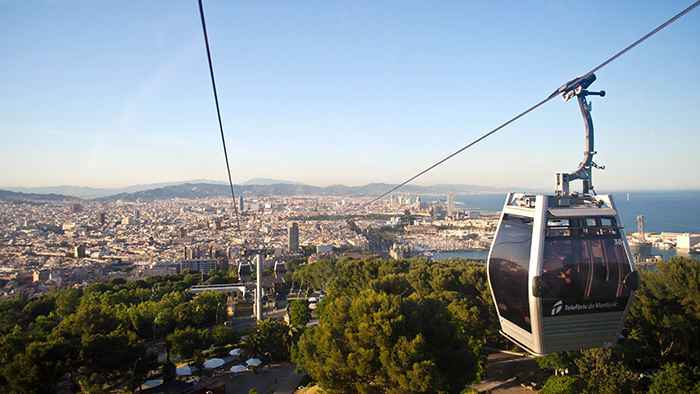
Montjuïc also has a special place in the history of the metric system. In 1792, the French astronomers Jean Baptiste Joseph Delambre and Pierre François André Méchain set out to measure the distance between Barcelona and Dunkirk. They chose Montjuïc to be the reference point for Barcelona and calculated the distance. They used that number to figure out the distance from the North Pole to the equator and created the first definition of the meter: one ten-millionth of that distance. This definition has since been superseded by one in terms of the speed of light. Locals like to pick herbs here and it’s also popular with amateur bicyclists.
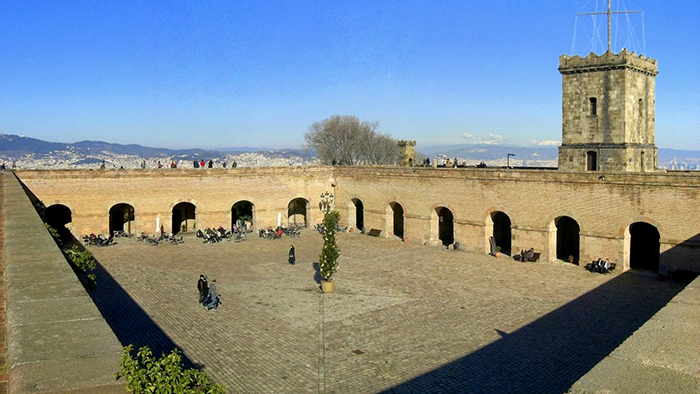
On top of Montjuïc Hill is the fortress-like Castell de Montjuïc (the Montjuïc Castle), an imposing structure that has been guarding Barcelona since 1640. It was expanded in the 18th century and went on to become a military prison. During that time it was considered a symbol of centralist repression and the abolition of Catalan liberties. It is now home to a military museum, which is a popular daytime destination for tourists.
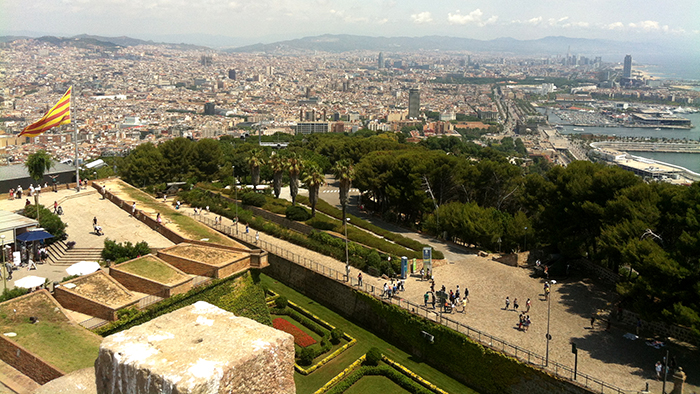
The best way to get there is via the Telefèric de Montjuïc, which is a cable car line that takes visitors high above the skyscrapers of Barcelona to the castle above. Not for those with vertigo, the Telefèric de Montjuïc is a thrilling and scenic ride. It alone is among the best places to visit in Barcelona. The best way to get there is to take the funicular train from the Parallel metro station. The train will take you to the cable car base station and from there you will be on your way to the Castle. A round-trip adult ticket for the cable car to and from Montjuïc Castle costs €9.80, which is a separate ticket from the funicular train ride to the base.
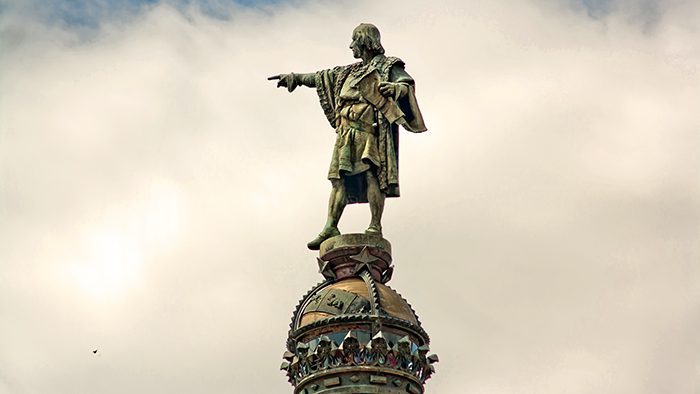
Strolling through Las Ramblas, this prominent statue is impossible to miss. It soars 197 feet above the port and Las Ramblas. The statue depicts Christopher Columbus pointing with his right hand and holding a scroll in his left. The statue is 24 feet tall and also rests atop a 131-foot tall Corinthian column that is firmly planted on a 66-foot circular base. It was erected to commemorate his arrival from the New World.
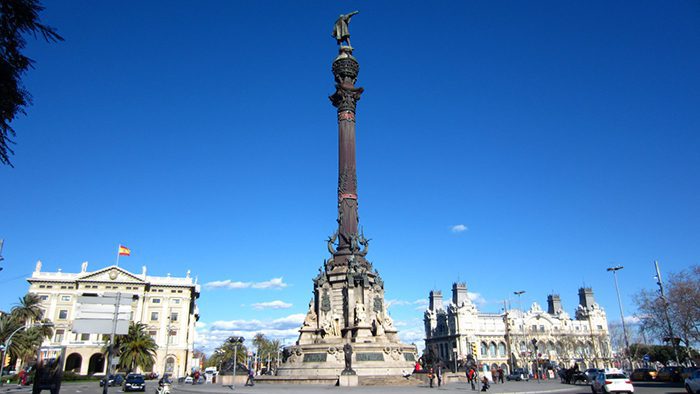
The most notable features of the statue are the fierce lions stationed along the base. The engravings depict events during Columbus’ journey to the New World, significant Spanish explorers and sailors and the locations Columbus lived in over the course of his life. Many say that the statue’s hand is pointing toward the New World, but it is actually pointing toward his hometown, Genoa.
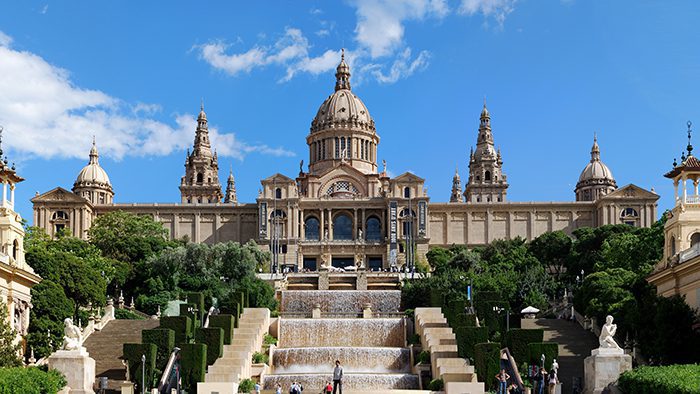
The National Palace is the home of the National Art Museum of Catalonia (MNAC), the largest art museum in the region. Like the nearby Magic Fountain, The National Palace was built exclusively for the Barcelona International Exposition in 1929. Midway through the project, Prime Minister Primo de Rivera rejected the more modern-leaning design of architect Josep Puig i Cadafalch and replaced it with a more traditional design by architects Pedro Cendoya and Enric Català. This mid-stream change resulted in the neo-baroque style that now exists.
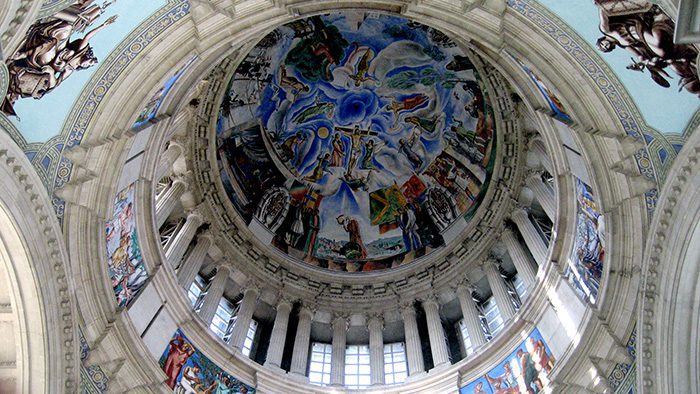
The museum itself is renowned for its international collection of Romanesque art, but also includes baroque, gothic and Renaissance pieces as well as artwork from the 19th and 20th centuries. Artists on display include El Greco, Peter Paul Rubens and the renowned Francisco de Goya. Two of the more fascinating pieces on display are the baldakin, or canopy, from the 12th century and several of the 12th and 13th century frescoes, which were removed from Pyrenees churches and relocated to the museum. There are also several examples of Barcelona’s modernista movement, such as striking chandeliers and furniture. The museum is one of the best places to visit in Barcelona and is a must for art and history enthusiasts.
For those who also want to see more artwork, there are several other museums in the immediate vicinity, such as the Fundació Joan Miró, which houses the prized works of Surrealist Catalan painter, Joan Miró.
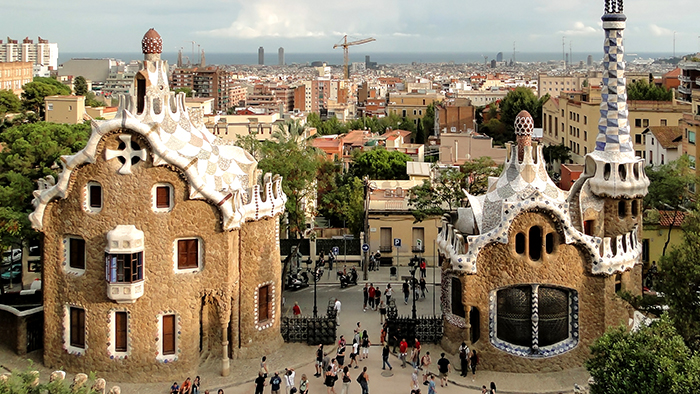
Park Güell is an expansive garden compound that juxtaposes gorgeous, natural scenery with the intricate stone and mosaic works of architect Antoni Gaudí. Entrance to this special world is free! Built in the early 20th century, the park is part of a UNESCO World Heritage Site entitled Works of Antoni Gaudí. Named for Count Eusebi Güell, the park was initially the site of a failed housing project. Güell hoped to attract wealthy homeowners with the area’s sprawling beauty and clean air.
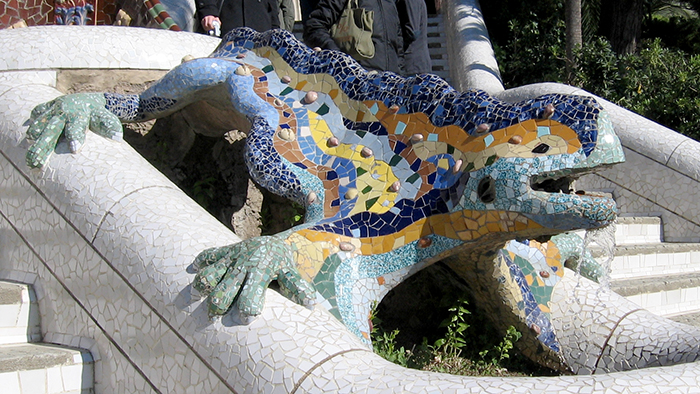
Of the 60 intended homes, only two were ever built, one of which was purchased by Gaudí himself. This gingerbread-like house is now a small museum dedicated to Gaudí, which displays some of the furniture and drawings Gaudí designed. A ticket needs to be purchased to enter the museum but there is a discount rate for those who purchase a ticket for both the museum and the Sagrada Familia.
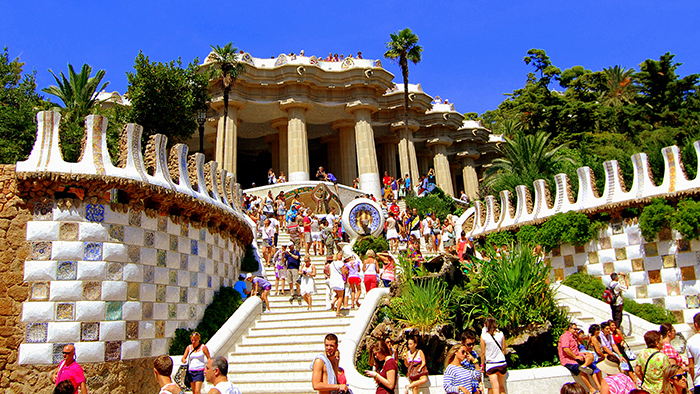
The park is filled with fantastical elements straight out of Gaudí’s imagination. The two buildings that flank the entrance are perfect examples of his flamboyance. A statue of a winding sea serpent creates a comfortable bench and several alcoves. Tributes to the Catalan culture, religious imagery and literary symbols are carefully woven into the designs. Pathways are unobtrusive and carefully integrated into the landscape of the park. From the high cross, visitors can get a sweeping view of Barcelona and the surrounding area. Not only is it one of the best places to visit in Barcelona, but it’s also one of the most photogenic. So don’t forget your camera!
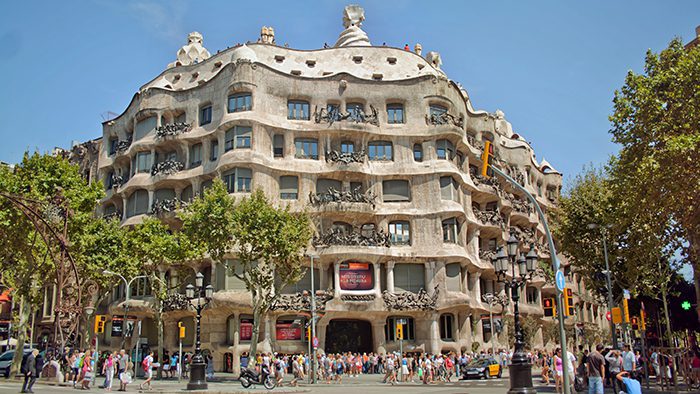
Antoni Gaudí’s imagination had no limit and La Pedrera is one of his most striking designs. La Pedrera was constructed between 1905 and 1910, but was not officially completed until 1912. Its history rivals its beauty. It was built for Pere Mila and his previously widowed wife, Rosario Segimon. Her deceased husband, Jose Guardiola, had made a fortune in the Americas but died soon after settling back in Spain.

He left the bulk of his wealth to his widow, who then married Pere Mila, a man of grandiloquence if there ever was one. He was notorious for his greed and ostentatious lifestyle. Some went as far to say that he was more interested in “the widow’s guardiola” (Italian for the widows piggy bank) than “guardiola’s widow.”
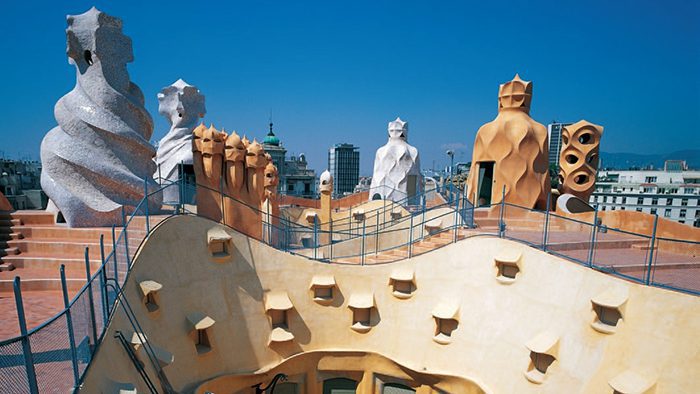
Either way, the two set out to build themselves a new home and keeping with his life of extravagance, architect Antonio Gaudí was hired for the task. Nowadays the marvelous structure emerges from a typical Barcelona avenue with dragon-inspired elements. The views from the top of La Pedrera are nothing short of amazing, as is the rest of the building. Notice how Gaudí’s inspiration was drawn from natural forms — when entering La Pedrera you are entering the belly of a beast. General admission is €16.50 and student admission is €14.85 (with student ID).
Jaume Sabartes is not a man to whom history was kind. Private secretary to Pablo Picasso, he has become little more than a footnote in the artistic world, despite acquiring dozens of Picasso’s paintings over the course of their friendship. He has however made one substantial contribution — founding Barcelona’s Picasso Museum.

When the museum opened in 1963, it consisted only of the pieces donated by Jaume, the city of Barcelona and a few collectors. It has since flourished into a 3,500-piece timeline of Picasso’s life. Walking through the gallery gives you a glimpse into the mind of one of the greatest artists ever to live. Picasso always had a deep connection with Barcelona, spending most of his life there after his family moved from Málaga.
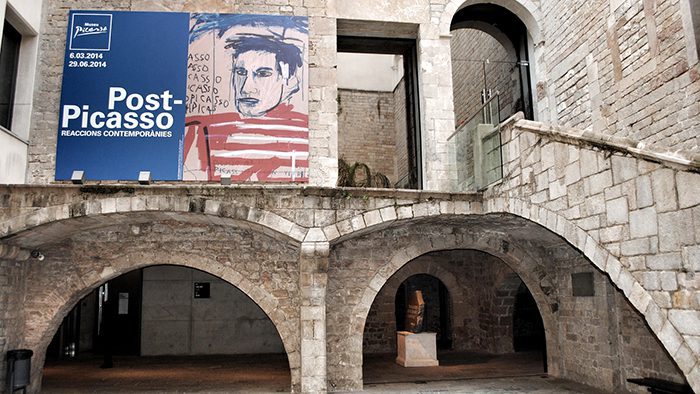
Though the museum does not contain any of his most famous pieces, it does contain hundreds of lesser known sketches and drawings, which are just as thrilling to see. The museum is located in a renovated gothic mansion in the old city of Barcelona. For only €9, guests can marvel at Picasso’s treasures. The museum is open Tuesday through Sunday 10 a.m. to 8 p.m.

Lovely Port Vell and the Barcelona boardwalk are both located at the end of Las Ramblas just left of the Christopher Columbus statue. Port Vell is a harbor that attracts millions of visitors a year to Barcelona’s waterfront. At the end of the modern boardwalk complex in Port Vell is the Maremagnum, a mall that was built especially for the visitors of the 1992 Olympic games. Inside the mall is an IMAX theatre, various shops and fabulous seafood restaurants overlooking the port. You will find yachts and sailboats docked tightly throughout the breezy marina.
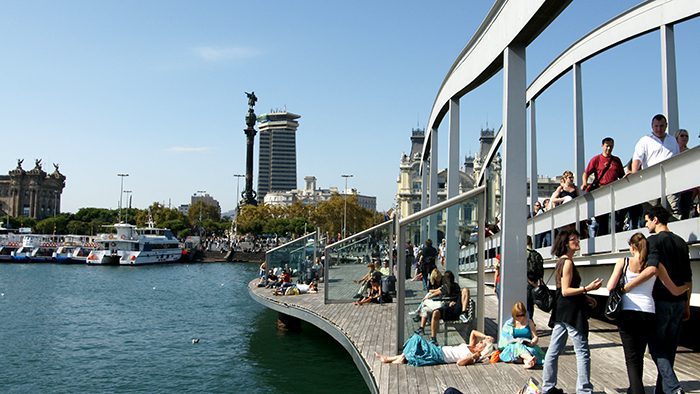
A great attraction at Port Vell is the Barcelona Aquarium, which is one of the biggest in the world and features more than 11,000 marine specimens from the Mediterranean and Caribbean. The best part? Strolling through the shark tunnel, which is surrounded on all sides with an aquarium full of immense sharks. Port Vell is a fantastic place to spend the day and the restaurant Txikiteo is only a short walking distance away. But if you instead choose to stay close to the marina, there are plenty of cafés and restaurants nearby.
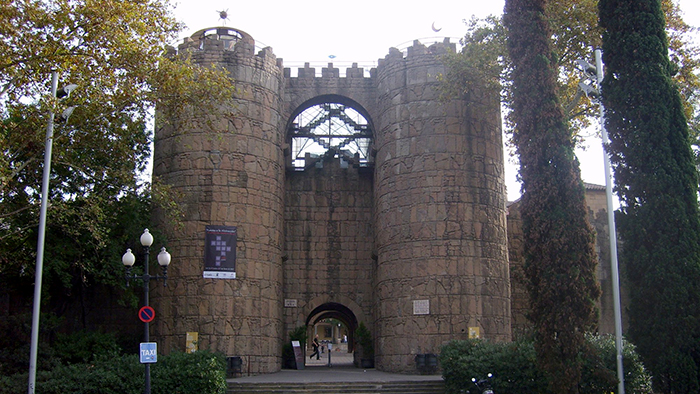
This museum complex is a charismatic mix of culture, history and fun. In 1929 there was an international exposition being held in Barcelona and the city wanted to capture a sense of its architecture. Josep Puig i Cadafalch had the idea for the museum and employed Francesc Folguera and Ramon Reventós to build it. The architectural duo decided to take the museum to the next level and showcase architecture from all over Spain.
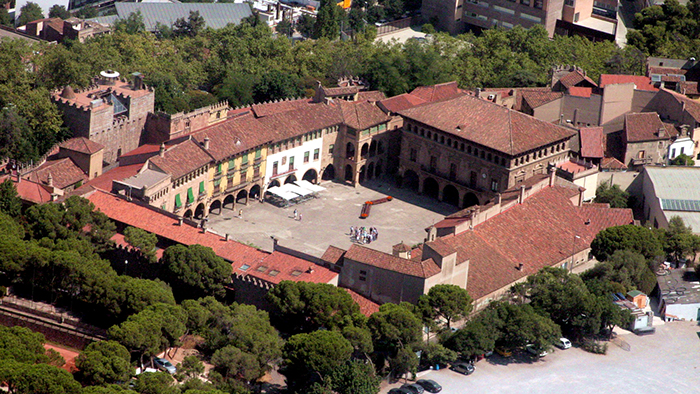
They chose Montjuïc as the site and spent the next 13 months assembling their vision. After completion, it was put into service for six months. Rather than demolish it afterwards, they opted to leave it open for future generations to enjoy. A wise choice, seeing as Pueblo Español is now enjoyed by visitors from across the world.
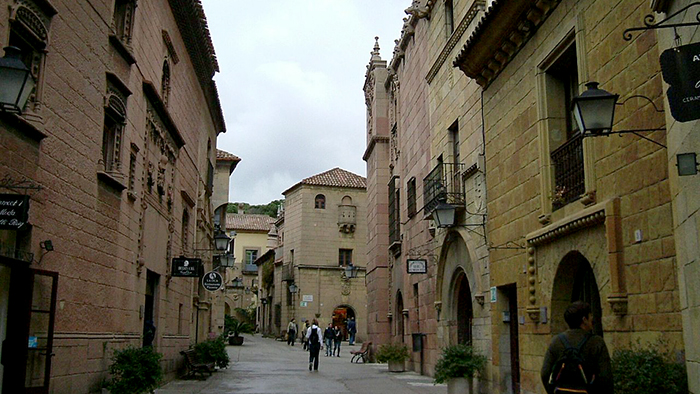
Pueblo Español has art exhibits, live concerts, an open-air museum, to-die-for views of Barcelona, a sculpture garden, arts and crafts workshops and plenty of activities for kids. Pueblo Español is a special kind of microcosm that recreates Spanish urban life with streets, squares and sculptures. Admission is €11 for adults and €6.25 for children ages 4 to 12.

Stretching from the Christopher Columbus monument in Port Vell to the Plaza Catalunya, Las Ramblas is the perfect place to soak in the ambiance of Barcelona. The lengthy promenade is actually a combination of several shorter streets, laid end to end, each with a different name. Federico García Lorca, a Spanish poet, described Las Ramblas as “the only street in the world which I wish would never end.”
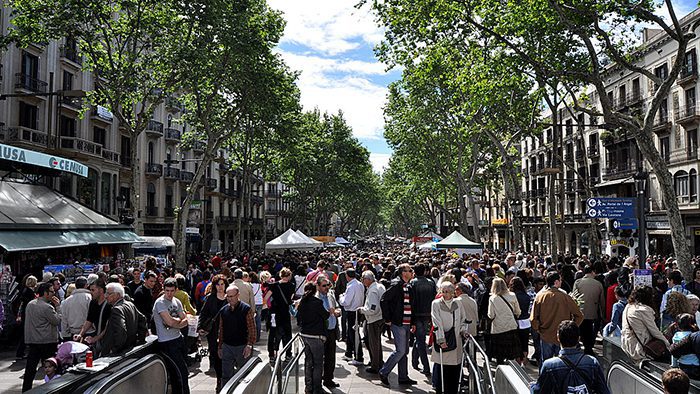
Along the way, visitors will find the Font de Canaletes, the renowned opera house Gran Teatre del Liceu and the famous Mercat de la Boquería San Josep (Saint Joseph’s marketplace). Street performers, florists, tourists and locals flock to Las Ramblas every day of the year, but know that the area gets especially packed during summer. And always keep an eye on your belongings.
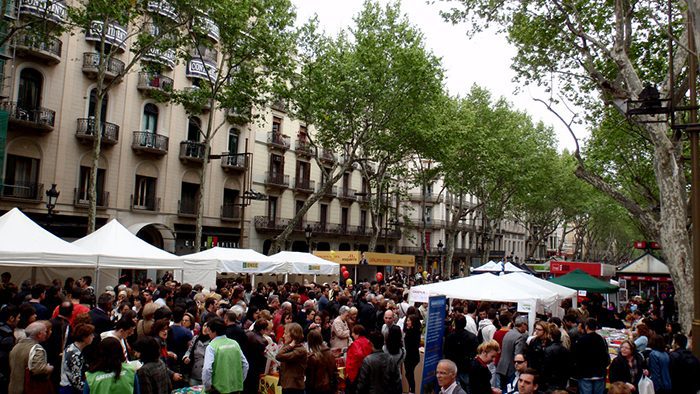
It is one of the liveliest avenues I have experienced in Europe and is truly not to be missed. If you visit Barcelona it is a must! Tip: While Las Ramblas is one of the best places to visit in Barcelona, the majority of restaurants along Las Ramblas are tourist traps. For more authentic food, head to the port area or venture into the Barri Gòtic.
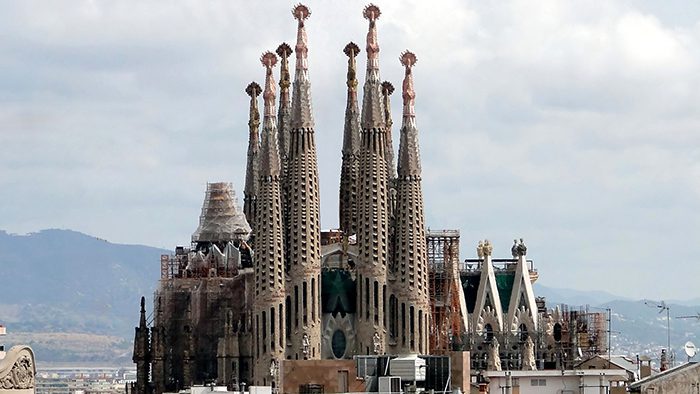
The polarizing Basílica I Temple Expiatori de la Sagrada Família, which translates into the Basilica and Expiatory Church of the Holy Family, is a massive Roman Catholic church that has been under construction since the 1880s… and is not finished yet! As of 2010, the building was considered halfway finished. The construction is fueled by private donations and ticket sales from tours. When completed, the Sagrada Familia Cathedral will feature three façades, 18 spirals, and numerous other complex architectural features. The building is part of a UNESCO World Heritage Site that includes many works by the famous Antoni Gaudí.
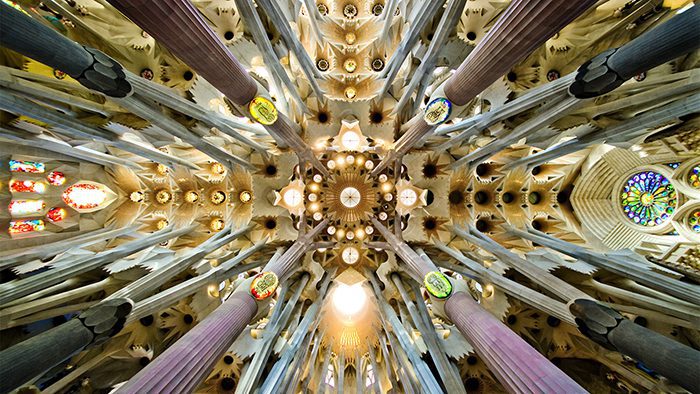
The museum and accompanying shop, the crypt, the nave, and the nativity and passion towers are currently open to visitors. The mini-museum within the church documents the construction of the cathedral and the life of Antoni Gaudí, who initially designed the building and left behind the plans to finish it. The two towers offer a stunning panoramic view of Barcelona, but are difficult to access. A lift carries visitors partially up the first tower, but the remainder of the distance must be climbed on foot. To descend, visitors then need to cross the walkway and use the staircase in the adjacent tower.
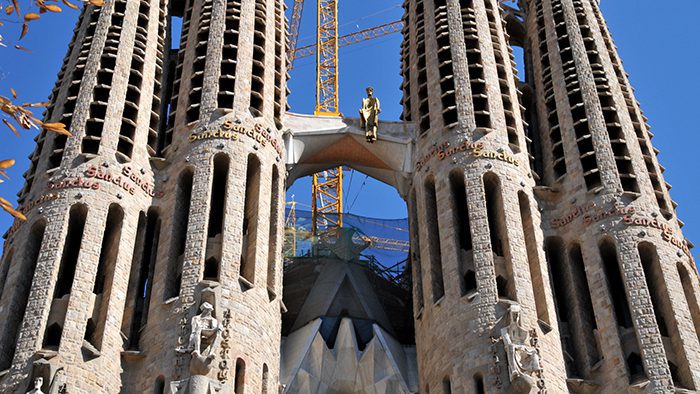
Throughout its construction, the Sagrada Familia has also proved to be a contentious issue among the Spaniards. Debates continue over whether the design continues to follow Gaudí’s plans, whether the completed structure will dominate Barcelona’s Cathedral, and whether the new underground train system could damage the foundation of the cathedral.
November to February
Monday-Sunday: 09:00AM–06:00PM
March & October
Monday to Sunday: 09:00AM–07:00PM
April to September
Monday to Sunday: 09:00AM–08:00PM
Admission to the Sagrada Familia with Turbopass is free and you’ll also get fast-track entry so you can skip the line.
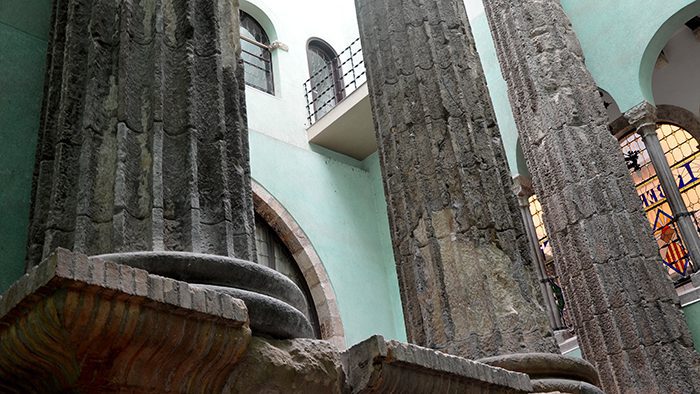
You can’t create a list of the best places to visit in Barcelona without featuring the Temple of Augustus. It’s the best-preserved Roman relic in the city. Located right smack in the middle of Roman Barcelona in the gothic quarter, it was once a sight to behold. The temple had six columns on each side and a nave, all dedicated to the worship of his Excellency Emperor Augustus. With or without the temple, Augustus is a man whose influence rings throughout history. Every emperor who came after him was named either Augustus or Caesar, both names derived from the original emperor. The eighth month of the year, previously Sextillis, was renamed Augustus in his honor.
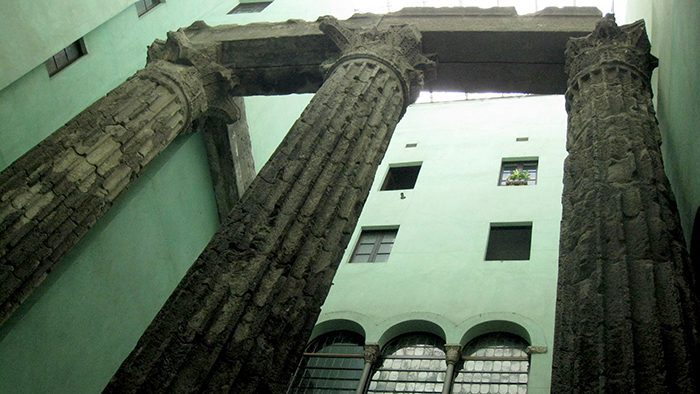
The temple has declined considerably since its heyday. All that remains of it now are three columns and the plinth. They can be found at the end of Carrer del Paradís, a street allegedly named for a magnificent garden it once housed. No trace of this mythical garden can be found there today.
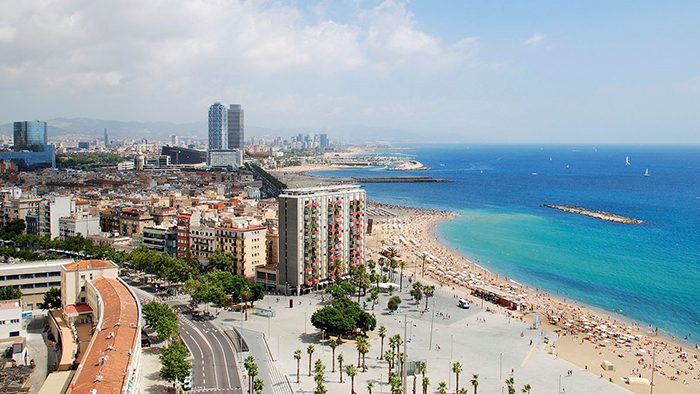
Barcelona is the cultural melting pot in Spain. With universities, design academies, breathtaking architecture, booming tourism, fresh Mediterranean cuisine, and colorful nightlife, Barcelona truly is a city for all ages. With so much to see, you might find it easier to take the Bus Turístic — an efficient and popular network of double-decker buses that allows passengers to hop on and off at all of the city’s major attractions. Riding a bus will also give you a chance to see Barcelona en route to your favorite spots and see things you might miss taking the metro.
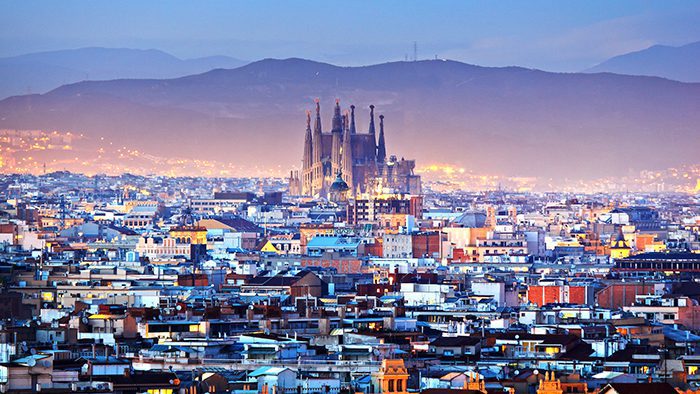
When it comes to buying gifts for loved ones back home I suggest you save your money and skip the knickknacks on Las Ramblas. Instead, purchase an elegant Gaudí coffee table book at one of his famous buildings. La Pedrera’s gift shop had many beautiful ones to choose from. Also, check out the Dali Museum, another hidden gem located only an hour and 20 minutes away from Barcelona in Figueres. Located in this iconic artist’s hometown, it features an impressive collection of his works.
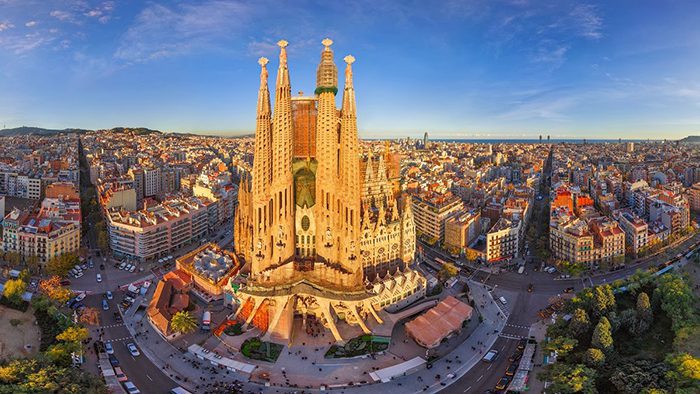
The most important thing to remember while exploring the best places to visit in Barcelona is to enjoy your surroundings. Every corner you turn will bring you to another visual surprise. The day trips in this guide will really give you a sense of the culture and landscape of the Catalunyan region. There is so much history in this part of Spain, and if thoughts of sipping cava don’t entice you to leave Barcelona to discover its surroundings, then maybe ancient Roman ruins or sun-drenched beaches will.
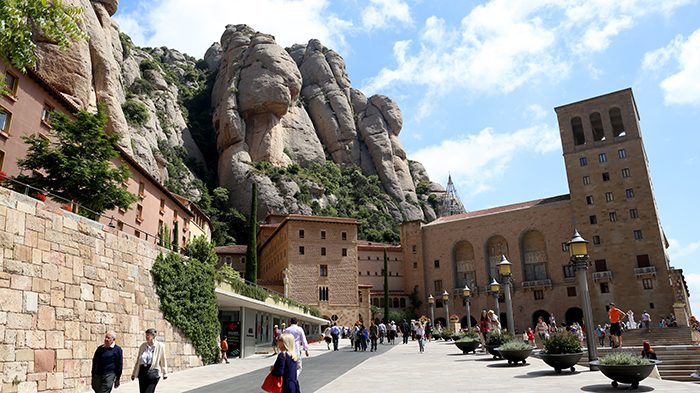
Monserrat is absolutely not to be missed! This jagged and mysterious mountain range is completely matchless. It boasts incredible views from the top, but getting there via the Funicular ride is half the fun. You will also come to discover that Catalunya is distinct, but Barcelona is one of Spain’s true wonders.
Time zone: GMT +2
Barcelona’s metro system is the most convenient way of getting around the city. There are eight metro lines identified by color and number. It also has a metropolitan and urban rail network (FGC). The metro runs Monday through Thursday, Sunday and public holidays from 5 a.m. to midnight; Fridays and evenings before public holidays 5 a.m. to 2 a.m.; and Saturdays the full day.
Since 2004, Barcelona has had a street tram system in place. There are two tram lines. The Transports Metropolitans de Barcelona (TMB) runs a public daytime bus service with a fleet over 1,000 buses servicing every part of the city. The city also has over 10,000 taxis, which are painted black and yellow.
Remember, your Turbopass includes unlimited public transport within Barcelona, as often as you wish. It is valid for buses, trains, and metro, as well as the airport-transfer by train, bus, and metro.

Situated at the northeastern most corner of Spain, the Catalunyan region has a Mediterranean climate. Summers are hot, but winters are relatively mild compared to the interior regions of the country. August is the hottest month and January is usually the coldest. Catalunya’s diverse climate allows for a wide range of activities like skiing, beaches, sailing, hiking, and fishing.
Barcelona is a hub of fashion; with stores selling everything from hippie grunge to ultra-expensive couture evening wear. Among the modernist buildings of Passeig de Gràcia are Barcelona’s high-priced stores like Gucci, Chanel, Carolina Herrera, and Adolfo Dominguez. The Zara on Passeig de Gràcia is one of Spain’s largest.
The Las Ramblas and Barri Gòtic neighborhoods are loaded with small shops and antique stores. Stop into the famous La Manual Alpargatera. This landmark store has sold espadrilles to everyone from Salvador Dali to the Pope.
El Corte Inglés is Spain’s largest department store chain. There are several of them throughout Barcelona, but the one in Plaça de Catalunya is the largest. There is also one in L’Illa (Avinguda Diagonal, 555-559), which is a large mall in uptown Barcelona.
Every Thursday in Plaça de la Seu, an antique market takes place. Come early and bring cash. But don’t be afraid to bargain a little for something you like. Els Encants (Calle Dos de Maig, 186) is the city’s largest open-air flea market. Various things are sold, from records and books to jewelry and scarves. Els Encants takes place Monday, Wednesday, Friday and Saturday from 9 a.m. to 6 p.m. In true Barcelona style, an art market, the Mercadillo de la Plaça de Sant Josep, takes place every weekend (Plaça de Sant Josep Oriol). Here, local artists display their work. It is important to remember to keep an eye on your bag(s) while browsing in markets!
Generally, most businesses operate from 9 a.m. to 2 p.m. and from 5 to 8 p.m., closing for those crucial three “siesta hours.” Restaurants will typically open for lunch around 1 p.m., close at 4 p.m., and open again for dinner service from 8 p.m. to midnight. Most museums are closed on Mondays. Many businesses in Spain also close for the month of August.
In Barcelona, there is a party to be found in every area, and the energy of the local crowds will keep you dancing till sunrise. Unlike other cities, each section of Barcelona offers a different kind of party, from gritty hole-in-the-wall dives to slick discos and chic dance boutiques. Generally speaking, most parties don’t get started until after midnight and easily stretch into the morning hours. One rule of thumb to follow is to dress your best in order to make sure you can gain access to every type of venue. Some nightclubs will turn away partygoers who don’t fit in with the crowd.
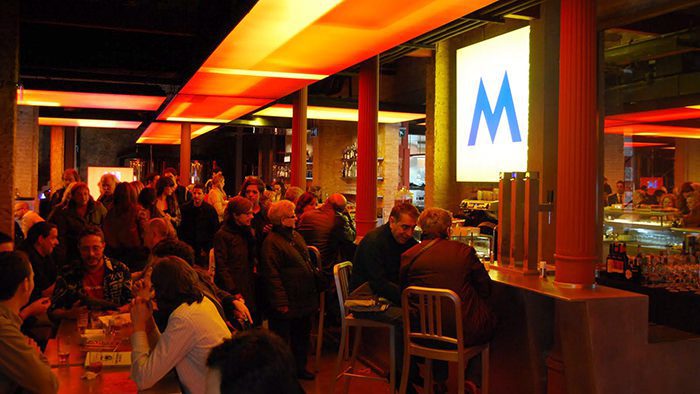
The perfect place to begin is Las Ramblas. Even as the sun dips down, street performers keep the crowds entertained and the sidewalks fill with partygoers craving some tapas and wine before heading out. From here, the throngs usually head to their favorite haunts. Hidden in the serpentine alleyways of the gothic quarter are tiny, spirited bars and clubs that are owned by locals and offer a true Spanish party. Alongside them are British and Irish pubs popular with tourists and backpackers. Plaça Real, in the heart of the gothic quarter, has plenty of high-energy venues.
For the trendy and hipster crowd, the Born district is the place to be. The bars and cafés are a little less tourist-friendly but anyone with a killer sense of fashion and an eye for a good time can fit right in. The Eixample district is a favorite among the LGBT community. Here, freedom of expression is the theme among the neighborhood cafés, restaurants, and bars.
The Raval district is the most international part of the city and another of the best places to visit in Barcelona. The hipster bars and kebab places are filled with bushy beards and a laid back atmosphere. But for those looking for the swankiest party in town, head to the Port Olímpic area. It has a host of seaside bars and nightclubs, and is a short distance away from Las Ramblas. Here, the girls are model gorgeous and the men cookie-cutter perfect. Wear your best and don’t be afraid to let loose on the dance floor.
Wherever you decide to go after dark in Barcelona, always be aware of your surroundings. Women should not venture along Las Ramblas or through the gothic quarter alone at night. Use the metro or taxi whenever possible. Smoking indoors in prohibited, but is often allowed anyway.
Day Trips: Check out our article about 5 awesome day trips from Barcelona
What are your recommendations for the best places to visit in Barcelona? We would love to hear from you! Leave us a question or comment below.
Counter
101 Countries • 1432 Cities
paul says:
the history of alternative muvment in barcelona…
http://www.canmasdeu.net